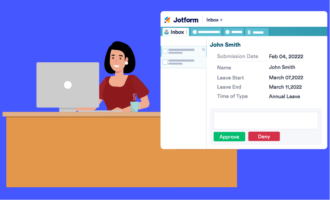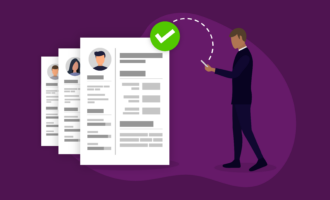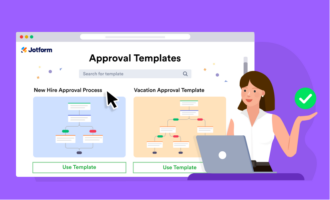Picture this: Everything’s going well at your organization. Colleagues are getting along with each other. Teams are hitting their goals. Employees feel inspired by leadership. And communication is direct and clear.
That’s the scenario most businesses want for the workplace, but small issues with employees can often snowball into large problems if they aren’t dealt with quickly. Enter human resource risk management, which can help businesses be proactive in solving potential issues.
What is human resource risk management?
Human resource risk management identifies potential employee-related risks to your business so you can minimize any problems before they arise. If a business ensures all employees are satisfied in the workplace, this will protect the organization against possible issues. Not mitigating employee-related risk can negatively impact revenue, reputation, profitability, and other aspects of the business.
The role of a human resource risk management professional is to consider all of the possible outcomes of employee risks, which can be related to employee behavior, management styles, or salaries, for example.
Risk management figures out the scenarios most likely to occur and the potential outcomes of those situations. Where possible, human resource risk management specialists look for ways to reduce risky situations. For example, if HR receives a complaint from an employee about their manager’s temper, they may need to step in and work with the manager on anger management tactics.
Pro Tip
Create free online human resources forms for your employees to fill out — 800+ different templates to choose from.
Why risk management in HR is important
Certain HR risks can result in lawsuits or penalties, which can lead to financial losses and damage to your company’s reputation. These complications also affect your business internally — you may experience a decline in productivity among employees as they start viewing their future at your organization with less certainty.
Effective HR risk management helps you spot these potential problems early. This way, you can take proactive measures to address them before they escalate.
Beyond just avoiding negative outcomes, effective HR risk management fosters a safer, more supportive workplace where employees feel valued and engaged. This, in turn, leads to increased retention and a healthier bottom line. Simply put, managing HR risks protects both your people and your business.
Types of HR risks
HR risks come in different forms, but here are some of the main types you’ll want to keep in mind for effective human resource risk management:
- Workforce risks: Issues like turnover, employee relations challenges, conflict, disengagement, and managing remote teams
- Data management and security: Leaks of personal and sensitive employee data from breaches and unauthorized access
- Compliance and ethics: Violations of labor laws, workplace safety regulations, privacy standards, and fostering fair hiring and promotion practices
- Financial risks: Problems related to pay equity, benefits costs, penalties from lawsuits, or mismanaged compensation
- Operational risks: Mistakes in recruitment, gaps in training, low productivity, and workflow inefficiencies
- Reputational risks: Damage due to public disputes, discrimination claims, unethical behavior, or poor employee treatment
Common risks HR managers should recognize
Software security breaches
One of the modern challenges HR managers face is protecting sensitive employee data from software security breaches. Today, almost every system is vulnerable to unauthorized access or leaks of personal information. If these risks are not identified in time, they can lead to legal penalties, loss of employee trust, and damage to a company’s reputation.
Overworked employees
Overworking employees beyond their contracted hours takes a toll on both personnel and the company itself. Employees suffer burnout, decreased productivity, and increased health risks. And the company runs the risk of violating labor laws regarding overtime compensation and rest periods.
Compensation and benefits
One major area of risk is compensation and benefits. Employees who are paid less than their equals often feel dissatisfied, demotivated, and discriminated against. These issues can put your company in murky legal waters.
Lack of accommodations
If your organization doesn’t provide legally required accommodations to employees with disabilities, you might get charged with discrimination claims. This is why it’s important to stay informed about legal obligations under laws like the Americans with Disabilities Act (ADA), so you can proactively implement accommodation policies.
Background checks for new hires
Every organization must perform thorough background and reference checks during the hiring process. If you don’t, you might end up hiring individuals who pose risks to safety, productivity, or company culture. This can lead to costly turnover, legal issues, or workplace conflicts.
Lack of training or education
Lack of proper training increases the risks of workplace accidents and injuries. A high number of these incidents means more workers’ compensation claims, which isn’t good for your company’s reputation. Besides, such practices also lower your employees’ morale.
Non-collaborative culture
When employees fear speaking up about problems, such as harassment, discrimination, or unethical behavior, it makes them frustrated and unproductive. Issues that remain hidden usually become worse over time. A culture that discourages open communication increases the risk of legal actions and reduces engagement.
Real-life HR risk management examples
To bring this to life, let’s discuss a few real-world examples of human resource risk management in action.
First is Planet Fitness, a health and fitness company in South Africa established in 1995. The company was struggling with data management systems, organization, and security. Its staff was also printing a large number of paper documents.
Planet Fitness decided to go digital in 2017 with Jotform. It uses Jotform to perform many HR-related tasks, including employee onboarding, payroll processing, and e-signatures, while being compliant.
The result? Planet Fitness has now built more than 3,000 workflows with Jotform and boosted overall efficiency by 30 percent. Its payroll processing time has also been reduced by 50 percent, even after scaling up to double in size without hiring new HR personnel.
Another example is ATFC, Ltd., a UK-based hospitality group. With over 20 restaurants, the company needed a 100 percent paperless solution for automated and risk-free recruitments and restaurant inspections. It collaborated with Jotform, which enabled it to collect job applications, streamline onboarding, and conduct on-site inspections using mobile phones.
Qisda, a Taiwanese tech firm, is also a great example of HR risk management. The company merged its HR and risk management functions to reduce talent risks and establish a more resilient and agile workforce.
HR risk management best practices
The best way to reduce HR risks is to have a comprehensive HR management plan in place. This involves
- Identifying key HR tasks and responsibilities clearly
- Designing and implementing tailored solutions for recruitment, onboarding, training, and compliance
- Establishing consistent documentation and transparent communication channels
- Creating a workplace culture where employees feel comfortable reporting issues
- Continuously monitoring HR risks and adapting strategies accordingly
- Embedding risk management into everyday HR workflows and decision-making
- Educating employees and management on recognizing and mitigating risk
How to reduce HR risk management challenges with Jotform
Jotform makes it easier for HR teams to tackle risk management challenges with its easy-to-use features. As an HR professional, you can use the platform to streamline and automate your critical HR processes. This reduces the risks of manual errors, compliance issues, and operational delays.
For instance, with Jotform Form Builder, you can create secure online forms for employee onboarding, performance reviews, leave requests, and incident reporting. It will ensure consistent and accurate data collection.
Moreover, Jotform’s Workflow Automation and Approval feature minimizes manual handling, reducing the chance of lost or miscommunicated documents. You can also use Jotform Sign to create secure e-signatures for digital contracts and policy acknowledgments.
In fact, Jotform also protects sensitive employee information with its encrypted data storage and GDPR and HIPAA compliance features.
Connect with our team now to learn how Jotform can help you develop a comprehensive human resource risk management strategy.
Try our free human resources form templates and PDF templates!














































Send Comment:
1 Comments:
More than a year ago
Very Informative Article and a great resource to earn such quality knowledge! Thanks for sharing this valuable information. I have been following some of them and still got many to get great knowledge.